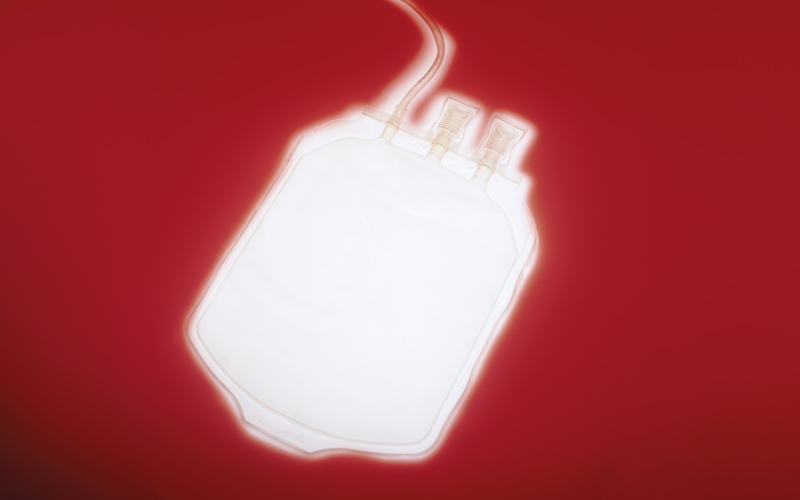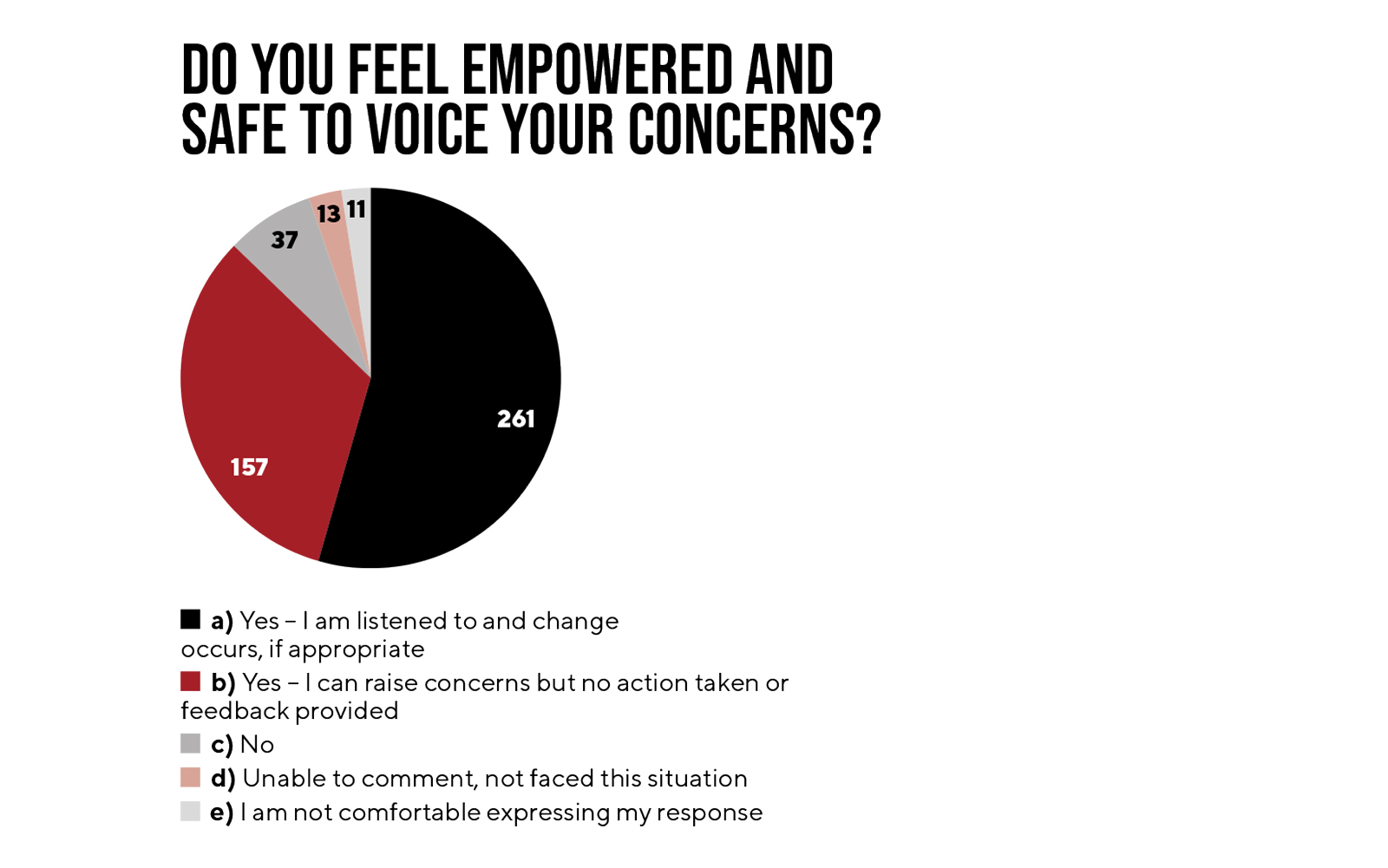Dr Jennifer Davies, Victoria Tuckley and Vera Rosa present the findings of the 2023 SHOT and UKTLC Transfusion Laboratory Culture Survey.

At a glance
- A survey was carried out in 2023 to understand the current status of the safety culture within transfusion laboratories, identify key themes and address issues identified.
- Approximately 1 in 5 laboratory staff stated they did not feel psychologically safe in their workplace, 2 in 5 felt concerns raised are not acted upon, and 1 in 10 felt unsafe to raise safety concerns.
- The survey responses shine a light on poor safety culture within laboratories that needs to be addressed urgently.
Serious Hazards of Transfusion (SHOT) accepts reports of serious adverse events and reactions relating to blood transfusion in the UK. In 2022, 18.6% of all incidents reported to SHOT were due to errors that occurred in the laboratory. Poor safety culture has been evident or cited as a contributory factor in many of these reports.
What is safety culture?
A good safety culture requires a combination of many aspects that are interrelated; these include effective communication, teamwork, adequate staffing levels, a non-punitive approach to errors, supportive leadership and a well-designed working system. A work environment where staff feel safe to raise concerns, coupled with a leadership team that listens and responds to concerns is critical to supporting a safety culture.
Safety culture surveys
In 2019, a survey was undertaken by SHOT in collaboration with other stakeholders to examine learning culture within transfusion laboratories following anecdotal reports of blame culture. The survey revealed instances of staff being taken through to disciplinary action following single quality incidents as well as instances where staff were pressured by managers to present a false impression of safety within the laboratories. In England, similar patterns to those seen in the culture survey are reflected throughout the NHS workforce. The NHS staff survey in 2023 showed that 40.5% of respondents felt their organisation did not treat those involved in an error or near miss fairly. A repeat culture survey was undertaken in 2023 to understand the current status of the safety culture within transfusion laboratories, identify key themes and address issues identified. The survey was developed as a collaboration between SHOT and the UK Transfusion Laboratory Collaborative (UKTLC), with input on survey design and recommendations from the Medicines and Healthcare Regulatory Agency (MHRA) haemovigilance team. The updated 2023 culture survey was distributed widely to transfusion colleagues to gain a better understanding of the views of staff working at all levels, both Health and Care Professions Council (HCPC)-registered and support staff in the laboratory, as well as Transfusion Practitioners and staff in quality roles.

2023 survey findings
- A total of 543 responses were received, of which 479 were from UK-based transfusion laboratory staff. Responses from registered and supervisory registered laboratory staff (NHS Bands 5 to 7) accounted for 344/479 (71.8%) responses.
- Approximately 1 in 5 laboratory staff stated they did not feel psychologically safe in their workplace, and 2 in 5 felt concerns raised are not acted upon, and 1 in 10 felt unsafe to raise safety concerns (see graph overleaf).
- Just under half of all transfusion laboratory staff, 228/479 (47.6%), stated they had faced incivility in the workplace. These were mostly belittling, blaming, shouting and false accusations.
- Almost half, 225/479 (47.0%), of laboratory staff stated they have either considered or have moved roles or organisations due to concerns regarding safety culture.
- Over half of laboratory staff stated that their health, 308/479 (64.3%), or home life, 335/479 (70.0%), have been affected by work pressure (see graph overleaf).
- Approximately 1 in 8 laboratory staff stated they had felt under pressure from laboratory team members to present an inaccurate assessment of the severity of an incident or been discouraged from reporting to external bodies.
- Approximately 1 in 16 laboratory staff stated they had felt under pressure from healthcare organisation risk management teams or consultant clinicians to present an inaccurate assessment of the severity of an incident or been discouraged from reporting to external bodies.
- Fear of being reprimanded prevented 54/479 (11.3%) laboratory staff from reporting safety concerns.
- Most respondents did not feel there had been any improvement in safety culture within the past three years; 275/479 (57.4%).
- Where improvements were seen, these were mainly in incident investigation and consideration of human factors and ergonomics.

Influential factors
The data examined provide a snapshot of transfusion laboratory staff attitudes and beliefs. While responses were received from only 479 UK laboratory staff, it is likely representative, and the concerning signals may be prevalent to a variable degree in laboratories across the UK. Several factors may have affected how likely an individual was to respond. Those who have experienced the trauma of incivility and poor safety culture may be more likely to respond, as a safe route to express their concerns and seek improvement. Conversely, where poor safety culture is present, this survey may not have been cascaded to staff members, or individuals may have been discouraged from responding.
Next steps
The responses shine a light on poor safety culture within laboratories that needs to be addressed urgently. Senior management should review the safety culture and ensure mechanisms are in place for staff to raise concerns and suggestions that actively result in improvements in safety. A top-down approach is key to implementation of an effective safety culture that filters down to all levels within the organisation. Changing an embedded culture in the workplace requires commitment, effort and time from all involved.
Recommendations for organisations to improve safety culture, help staff raise concerns and support staff are contained in the survey summary.
Several improvement initiatives to enhance safety culture may be ongoing or planned in various organisations; progress and impact of implementation of these safety initiatives should be monitored.
An infographic has been developed with some suggestions for ideas to promote discussions on improving safety culture, with key points outlined below. The IBMS has also responded to the survey results– see “Explore Further” for the website link.
Ideas to improve safety culture
Changing culture in a workplace is neither quick nor easy. It takes effort, commitment and time. Start with small steps and grow at the right pace for the team:
- Compassionate leadership training – open discussions about assumptions and bias.
- Team-building events and work social events.
- Regular informal coffee mornings, or “lunch and learn” sessions on civility, workforce policies and related topics.
- Include 360-degree element in performance reviews for managers (e.g. feedback from those managed, as well as line managers).
- Small group sessions to increase awareness on Civility Saves Lives.
- Promotion of resources from Civility Saves Lives (e.g. videos, podcasts and books).
- Instigating 1:1 meetings between line managers and staff members.
- Including regular “thanks and gratitude circles” within team huddles.
Dr Jennifer Davies is Transfusion Laboratory Manager at Royal Devon University Healthcare NHS Foundation Trust, UKTLC Deputy Chair and a SHOT Steering and Working Expert Group member, Victoria Tuckley is SHOT Laboratory Incident Specialist and Vera Rosa is SHOT Incident Specialist. They would like to thank all who responded to the survey and the MHRA, which had input on the survey design and recommendations. Nicola Swarbrick helped to develop the SHOT resources.
Explore Further
- Results summary from the 2023 Laboratory Culture Survey: bit.ly/3QEs0JU
- SHOT resources and links about speaking up for safety: bit.ly/4dClQn6
- IBMS response to the findings of the survey: bit.ly/4dQBU4L
Image credit | Science Photolibrary | Supplied
